- Date: Late 9th century AD
- Religion: Hinduism
- Built By: Jayavarman II
- Dedicated To: Unknown
- Style: Preah Ko
- Best Time to Visit: Anytime
- Length of Visit: 1 - 2 Hours
- Temple Pass: Required
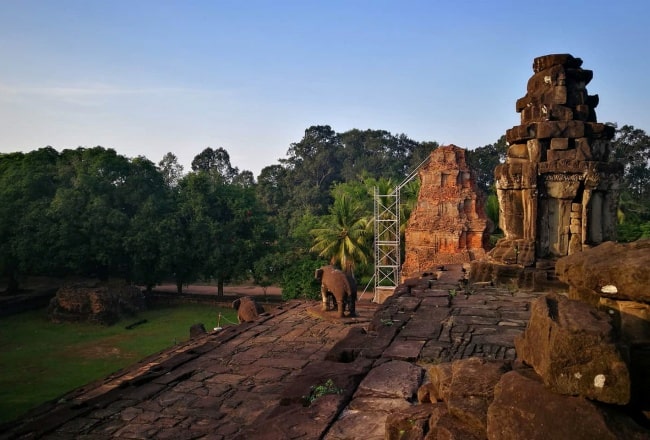
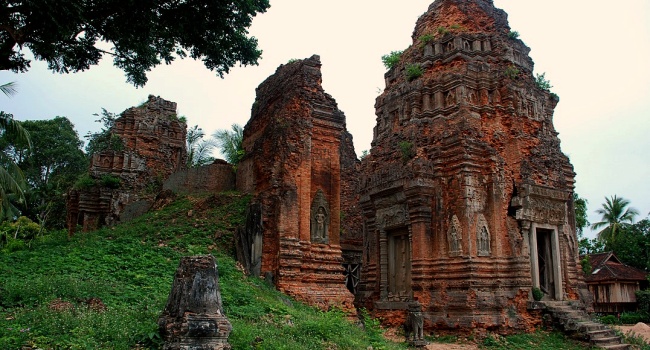
 Jolie LIEM
Jolie LIEM
 05/01/2026
05/01/2026
The Roluos Group refers to a collection of four Angkor-era monuments, which are not located within the main Angkor Park, but instead near a small town named Roluos, 12km east of Siem Reap. The monuments are named Bakong, Preah Ko, Lolei, and Prei Monti.
The significance of these four temples is that they are the last remains of Hariharalaya, which was the second capital of the Angkor-era Khmer Empire. The temples were built by King Jayavarman II, who moved the capital to Roluos from Mahendraparvata. With a population matching that of modern-day Phnom Penh, Mahendraparvata was the original Angkor capital. It was located on the slopes of Phnom Kulen, a mountainous jungle plateau steeped in rich history.
The last king who lived at Hariharalaya was Yasovarman I. In 905 CE, he built the first major temple structure at Angkor called Phnom Bakheng and moved the capital there.

Roluos Group is located a mere 12 km east of Siem Reap, just off of National Road 6. This is the same direction as Phnom Penh, therefore you should expect heavy traffic on the road. The road is sealed and smooth, so cycling is possible, however due to the traffic, it’s recommended that you arrange for a tuk-tuk to take you there and back. This can be set up by your hotel staff or directly with the seemingly thousands of idle tuk-tuk drivers that line the streets throughout Siem Reap.
Although the Roluos Group is not located within the Angkor Archaeological Park, a temple pass is required to visit these monuments. So make sure to buy one beforehand from the official ticket office, located on Road 60 near the entrance to the park. Temple passes cannot be purchased at Roluos!
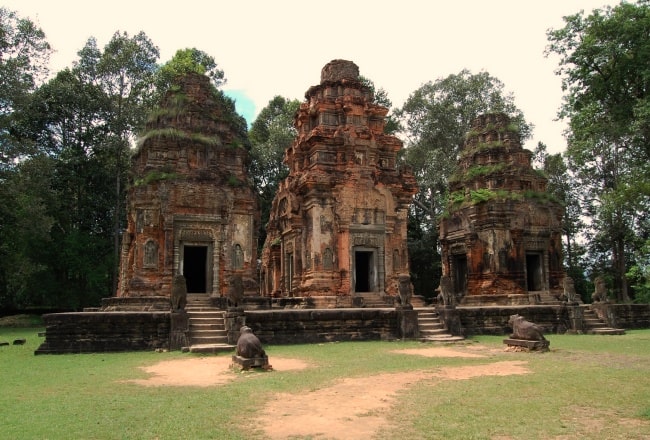
Visiting the Roluos group can be accomplished during a half-day tour from Siem Reap. It’s best to plan your visit for the morning, and arrange for a visit to Phsar Leu Market first. The market is on the way to the temples and is a fantastic and authentic place to visit. Many locals frequent this market, the largest in Siem Reap. No English is spoken, and you can immerse yourself in the rows of raw meat, fruit, vegetables, and wide varieties of household goods and other items.
One of our suggested itineraries is to group together Phaser Leu Market and the Roluos Group in the morning, and Wat Athvea at Phnom Krom in the afternoon. Phnom Krom is also an excellent location to view the sunset.
You should visit the Roluos group because they are not as crowded as the other temples near Angkor Wat.
Moreover, the Roluos Group is also historically significant and most of the temples here are in excellent condition.
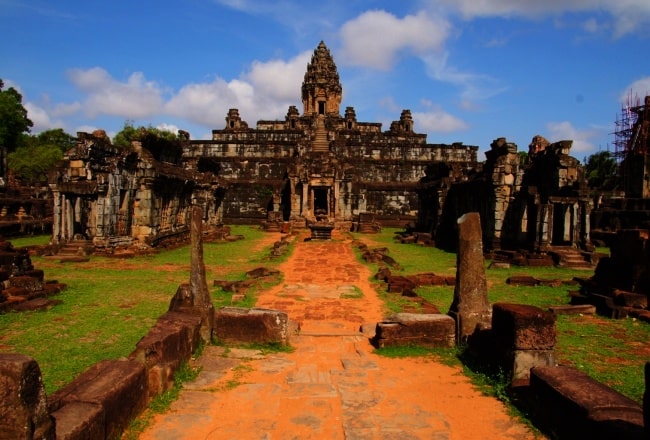
Each temple at the Roluos group has unique and interesting characteristics:
This is the highlight of the Roluos Group and is the first temple mountain of its style; it features five levels, with a center tower, and boasts an impressive height of 15 meters. It was the state temple at the center of Hariharalaya. It collapsed at some point but was reconstructed by the French between 1937 and 1945. It also features the beautiful Bakong Pagoda, which is modern and displays interesting murals. The pagoda is in great condition and is still in use.
Here is everything abot Bakong
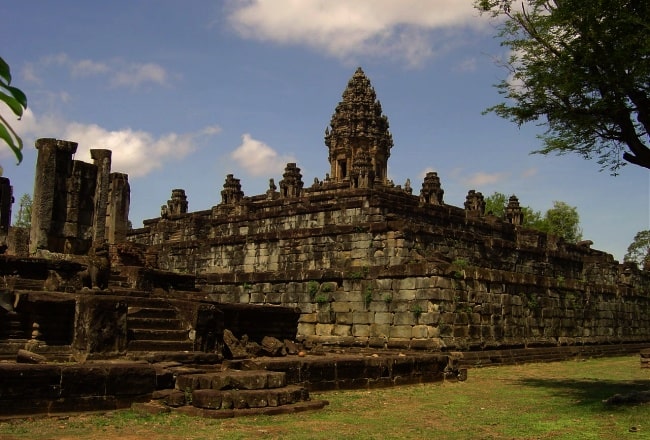
With statues of bulls surrounding it, it is no wonder that this temple’s name means “sacred bull”. It features beautifully preserved carvings and six towers. Inside each tower is a small, active shrine.
Here is everything abot Preah Ko
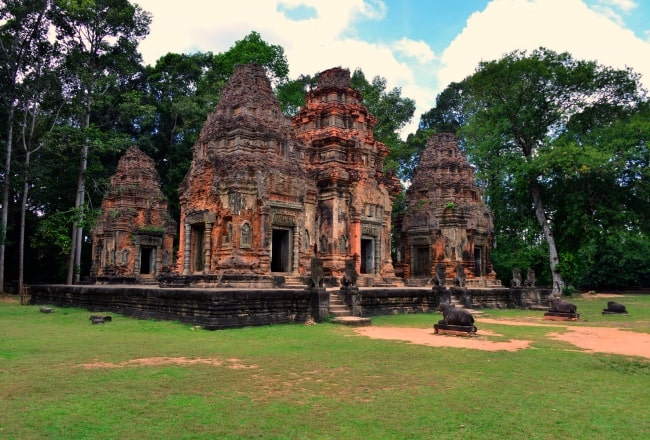
This temple is unique in that it is an island temple. It is surrounded by a man-made reservoir, which is called baray in Khmer. The reservoir, though, is now dried up. The temple features four crumbling towers. This was the last temple that Yasovarman I built before moving the capital to the Angkor area.
Here is everything abot Lolei
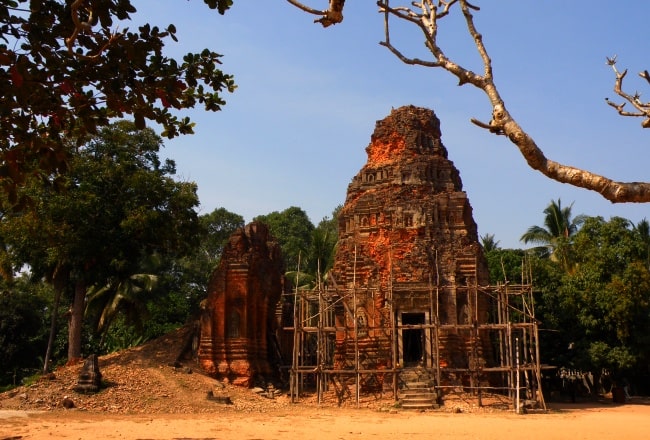
Prasat Prei Monti (also spelt Prey Monti or Preimonti) is a group of three brick towers situated 2 km south of the temple-pyramid Bakong in Roluos. 300 m west of the Bakong there is a signboard indicating the correct route to Prei Monti to the south.
The three Prasats of Prei Monti are located in the east of a rectangular compound, which once was surrounded by a moat. In this respect it appears similar to the Preah Ko shrine of Roluos: a sanctuary close to the eastern edge of a much larger area. In both rectangles only traces of other constructions were unearthed.
Both compounds seem to have been royal palaces, with a sanctuary built of non-perishable material at the entrance from the east. Remarkably the two santuaries of these two similar compounds are located on the same north-south axis, it runs parallel to another axis which without doubt is of highly symbolic significance, namely the north-south-line connecting the Bakong state temple and the Lolei shrine in the centre of Indravarman's vast reservoir called Indratataka. The more secular palace axis of Preah Ko and Prei Monti is only about a hundred metred further west.
Khmer palaces were built of perishable materials such as wood and bamboo, this is why nothing remains of them, but pieces of ceramics from the contemporary Chinese Tang dynastie were found in this area, typical luxury goods. Similar to Preah Ko, the temple sanctuary built of stone is located inside the palace enclosure, but close to its eastern edge.
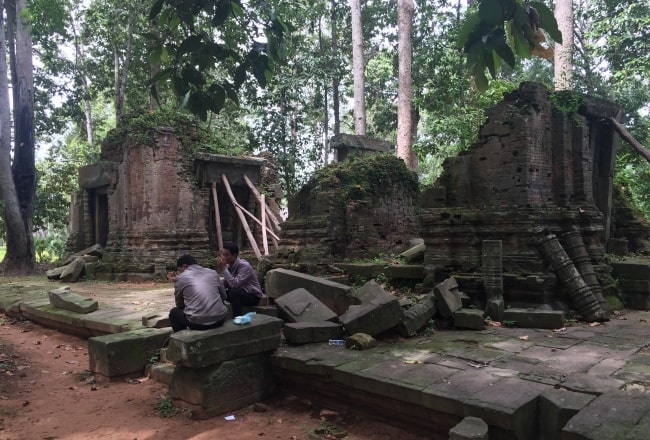
Prei Monti is older than Preah Ko and the other two major monuments of the Roluos Group, Bakong and Lolei. Preah Ko was the palace and ancestor temple of Indravarman I who is the first king of the Angkor era, well-known from own epigraphical records and maybe the first ruler of more than a regional Khmer principality.
He succeded Jayavarman III, who was childless. Sometimes Prasat Prei Monti is ascribed to this king, Jayavarman III, of whom not much is known. Others believe Prei Monti to be the first palace of Indravarman. However, Prei Monti is one of the first monuments from the dawning Angkor era.
Prasat Prei Monti's three brick towers are open to the east and share a single platform. They are more stocky and less elegant than those of the later Preah Ko. But as in the case of Preah Ko, the Prasats are made of brickstone, with sandstone doors from the east and blind doors at the three other sides.
The central tower is almost completely collapsed, but its sandstone lintel can be studied on the ground slightly to the east. It is much less elaborate than the famous lintel carvings at Preah Ko, but it already marks a transition from a pre-Angkorian division of the panel by a line of medaillons to the more unified classical style of a bent garland.
All in all, there is not as much to see at Prasat Prei Monti as at the Preah Ko temple. But it is a silent place, where the rare visitor can explore the beginnings of Angkor architecture without disturbances.
The morning is a good time to visit Prei Monti. A ticket is not required at this remote small structure.
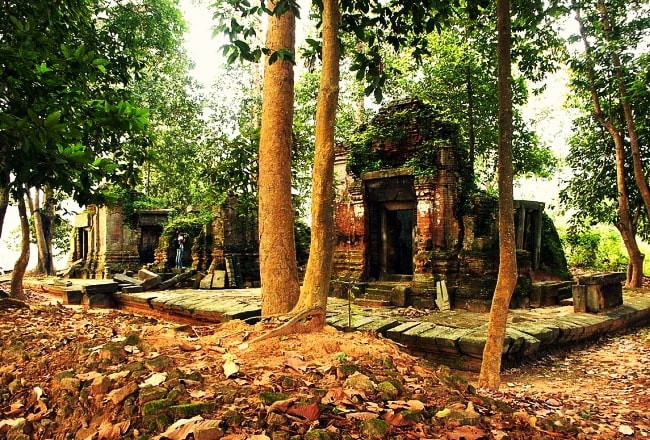
The Roluos Group date to the 9th Century and were devoted to both Shiva and Vishnu (together "Hari-Hara"). Indravarman I moved his capital to Hariharalaya ("abode of Hari-Hara") from Jayavarman II's founding Angkorian capital on Phnom Kulen, and this remained the capital until it moved to Bakheng, in the current archaeological park, in 905.
Preah Ko was built in 879-880, and has 6 brick towers, while Bakong was completed in 881, and was probably the state temple of Indravarman, although this possibly built on an earlier temple mount. The Angkor Wat-style lotus spired central sanctuary was probably added in the 12th century, possibly by Yasovarman II.
Lolei, transitional in style betwwn preah Ko and Bakheng, was built in 893 by Yasovarman I, and although the towers are in poor repair, there are some exquisite carvings remaining.

We believe you have the right to arm yourselves with as much information as possible before making any decision.
Check below the detailed information for our different destinations, our plans by travel theme or time frame to learn more before moving forward...




Jolie LIEMMy name is Jolie, I am a Vietnamese girl growing up in the countryside of Hai Duong, northern Vietnam. Since a little girl, I was always dreaming of exploring the far-away lands, the unseen beauty spots of the world. My dream has been growing bigger and bigger day after day, and I do not miss a chance to make it real. After graduating from the univesity of language in Hanoi, I started the exploration with a travel agency and learning more about travel, especially responsible travel. I love experiencing the different cultures of the different lands and sharing my dream with the whole world. Hope that you love it too!